Jack
Nichols is now known as a founding father of the gay and lesbian
liberation movement and of the movement for male liberation, editor
of GAY (the first gay weekly newspaper), co-founder of the
Mattachine Societies of Washington, D.C. and Florida, and a warrior
who broke ground for gay equality.
--Harrington Park Press, 2004
His latest book is The Tomcat Chronicles: Erotic
Adventures of a Gay Liberation Pioneer (Park-Harrington
Press, a division of the Haworth Press, 2004). Nichols' polemic,
The Gay Agenda: Talking Back to the Fundamentalists
(Prometheus Books) was published in 1996. He is also the
author of Men's Liberation: A New Definition of
Masculinity (Penguin); Welcome to Fire Island: Visions
of Cherry Grove & the Pines (St. Martin's Press); and is
co-author with Lige Clarke of I Have More Fun With You Than
Anybody (St. Martin's Press); and Roommates Can't
Always Be Lovers: An Intimate Guide to Male/Male
Relationships (St. Martin's Press.) |
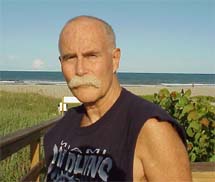 |
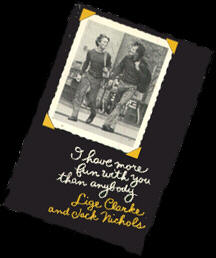 |
I Have More Fun With You Than Anybody has been
hailed as the first non-fiction memoir by a male couple.
Jack Nichols can be reached at mailto:jack.nichols@earthlink.net | Accolades
|
"Jack Nichols was always pushed to the front because he looked
like the all-American boy."
---Keith Howes, Gay News, London
"Full of zest for life and appreciation of its finer
values-kindness, generosity, pursuit of knowledge, intelligent
conversation, loyal friends." His arguments are both cogent and
persuasive...He presents them well and occasionally he breaks new
ground."
---Publisher's Weekly
"Jack Nichols and Lige Clarke organized the Mattachine Society's
first civil rights movement-style picket of the White House in
April, 1965."
---Washington History (Fall-Winter
1994-1995) Caption under Nichols' & Clarke's Photo
|
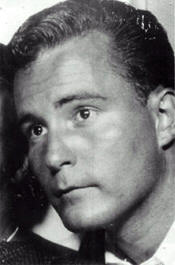 Jack Nichols: Jack Nichols:
1962
|
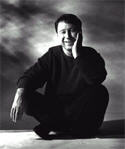 James T. Sears, Ph.D. James T. Sears, Ph.D.
|
"Influential across three
generations of gay activists, Nichols is truly the movement's
poet-anarchist, its political Pinnochio.Influenced by the poetry of
Walt Whitman and the philosophies of the East, Jack Nichols, more
than any other Southerner of the homophile era, helped energize the
gay movement."
---James T. Sears, Ph.D., author Lonely
Hunters: An Oral History of Lesbian and Gay Southern Life
(1948-1968) |
| "Nichols intense passion and graceful writing style combined
to create rousing messages reminiscent of the inspirational words
written by Thomas Paine two centuries ago."
---Rodger Streitmatter, Ph.D., author
UNSPEAKABLE: The Rise of the Gay and Lesbian Press in
America |
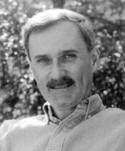 Rodger Streitmatter, Ph.D. Rodger Streitmatter, Ph.D.
|
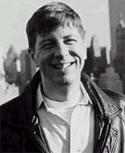 Charles Kaiser
Charles Kaiser |
"Jack Nichols and Franklin
Kameny did more than anyone else to infuse the gay movement with the
spirit of the 60s." "Jack Nichols and his lover, Lige Clarke, wrote
the first gay-authored account of the Stonewall riot."
---Charles Kaiser, author The Gay Metropolis,
1940-1996 |
|
"In the mid-1960s Kameny and Nichols were firmly established as
the leaders of a radical wing of the homophile movement. They had
introduced picketing as an acceptable form of protest for
homosexuals, and they had dared to take on the powerful psychiatric
profession."
---Edward Alwood, Ph.D., author Straight News:
Gays, Lesbians & the News Media |
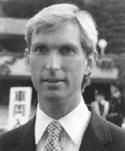 Edward Alwood, Ph.D. Edward Alwood, Ph.D.
|
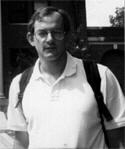 John
Loughery John
Loughery |
"With
all the passion of his heroes, Walt Whitman and Thomas Paine,
Nichols is the individual with a wide view, grounded in both
literature and activism. He not only talks back to the
fundamentalists, he talks back to us.above all about the dignity of
our struggle."
---John Loughery, author of The Other Side of
Silence: Men's Lives and Gay Identities: A Twentieth Century
History |
| "Together Nichols and Kameny founded the Mattachine Society
of' Washington on November 15, 1961. As Kameny shared with me, he
and Jack 'struck it off to some considerable degree. He ended up
being a close friend and coworker...(He) was figuratively, even if
not perhaps literally, the second charter member after me. And was
always an officer of the group. And we worked well on quite a number
of things.'...The two men quickly became a most effective team,
particularly in the area of challenging the mental health profession
on its unthinking assumption that homosexuality, per se constituted
mental illness. As Jack averred to Jim Sears in Lonely Hunters,
'Kameny and I agreed we must plan challenges to the psychiatric
establishment. This singular aspect of our cause united the two of
us, perhaps, more than did any other issue.' " |
 Paul D. Cain Paul D. Cain
|
Paul D. Cain, author of Leading the Parade:
Conversations with America's Most Influential Lesbians and Gay Men
 Vern L. Bullough, RN, Ph.D. Vern L. Bullough, RN, Ph.D. |
Jack
Nichols and Lige Clarke became the most celebrated and recognizable
gay male couple in America. Together they were involved in the
launching of the first homosexual weekly, GAY. After Lige Clarke was
murdered in Mexico in 1975, Jack carried on without him and remained
one of the leading advocates for gays and lesbians in the country.
Vern L. Bullough, RN, Ph.D., editor of Before
Stonewall: Activists for Gay and Lesbian Rights in Historical
Context, 2002 |
"Jack Nichols has been active in the gay movement since 1961. He was a
pioneer. To those of us who came of age during the Stonewall period, he is
probably best known as one half of a couple known simply as "Lige and
Jack." They were the quintessential gay lib lovers and their byline and
photos seemed to appear in every early gay lib publication.They became so
familiar to us-as a couple-that they became cultural icons."
---Douglas Beach in the New York Native
"For the 35th anniversary of Stonewall, veteran activists led the New
York Heritage of Pride parade, some with many more than 35 years of
experience in the movement. Riding on two flatbed trucks marked "Veterans
of Stonewall and Early Activists" near the front of the march, these
legends were cheered by thousands. Three of the most distinguished
activists of all time sat in the front of the first float, a veritable
Mount Rushmore of movement icons-Frank Kameny, Jack Nichols, and Dr.
George Weinberg."
--Andy Humm in Gay City News, New York, July 1,
2004
|
"One of the earliest and most influential members of the
Mattachine Society of Washington was Jack Nichols…He, his friends,
and his lover Lige Clarke who worked in the Office of the Army chief
of Staff, became immersed in the work of the organization…Nichols
suggested the White House as a (protest) target. "The U.S.
government persecutes us and so does the Cuban government," he told
Kameny, suggesting that they combine their grievances against the
two governments. That night they called other Mattachine members and
got ten people to agree to picket." |
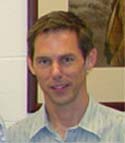 David K. Johnson, Ph.D. David K. Johnson, Ph.D.
|
---David K. Johnson, Ph.D., author of The Lavender
Scare: The Cold War Persecution of Gays and Lesbians in the Federal
Government, 2004
Academic
Recognition
With a 1998 plaque-- "Jack Nichols: Congratulations for being designated a
recipient of the 'Public Service Award' of The Society for the Scientific
Study of Sexuality for 1998.This award which is based on career
achievement is given to individuals whose service has had a major impact
on society. It is given for outstanding achievement or major impact in
such areas as public awareness of sexual issues, public advocacy,
professional practice by educators or health specialists and legislation
or public policy formation. Your pioneering and ground breaking efforts in
organizing the gay and lesbian community provides the basis for this much
deserved recognition by The Society."
---Howard J. Ruppel, Jr., Ed.D., Ph.D. Executive
Director, The
Society for the Scientific Study of Sexuality
Historical References
The Gay Militants, by Donn Teal, Simon & Schuster, 1971
(paperback-St. Martin's Press, 1995)
The Gay Crusaders,
by Kay Tobin & Randy Wicker, Paperback Library, 1972 (Chapter
10)
The Gay Insider USA, by John Francis Hunter,
Stonehill, 1972 (Chapter 34)
Sexual Politics, Sexual
Communities, by John D'Emilio, University of Chicago Press, 1983
Long Road to Freedom: The Advocate History of the Gay &
Lesbian Movement, Edited by Mark Thompson, 1994 Introduction to
1972-pages 65-66
Unspeakable: The Rise of the Gay &
Lesbian Press in America, by Rodger Streitmatter, Ph.D., Faber and
Faber, 1995
Straight News: Gays, Lesbians and the News
Media, by Edward Alwood, , Ph.D., Columbia University Press, 1996
Lonely Hunters: An Oral History of Lesbian & Gay
Southern Life, by James T. Sears, , Ph.D., Westview-Harper
Collins, 1997 (Chapters 6 & 7)
The Gay Metropolis
1940-1996, by Charles Kaiser, Houghton-Miflin, 1997
The Other Side of Silence: Men's Lives & Gay
Identities-A Twentieth Century History, by John Loughery, Henry
Holt, 1998
Witness to Revolution: The Advocate Reports on
Gay & Lesbian Politics 1967-1999 Edited by Chris Bull pages
15-17, Alyson Books, 1999
Alternate Channels: The Uncensored
Story of Gay and Lesbian Images on Radio and Television 1930s to the
Present by Steven Capsuto, Ballantine Books, 2000, Chapter 7
Rebels, Rubyfruit and Rhinestones: Queering Space in the
Stonewall South, by James T. Sears, New Brunswick, NJ: Rutgers
University Press, 2001 (Chapters 3 & 15)
Voices of
Revolution: The Dissident Press in America, by Rodger
Streitmatter, Columbia University Press, 2001 (Chapter 13)
Leading the Parade:Conversations with America's Most
Influential Lesbians and Gay Men by Paul D. Cain, Foreword by Jack
Nichols, Scarecrow Press, 2002
Before Stonewall: Activists
for Gay and Lesbian Rights in Historical Context, edited by Vern
L. Bullough, RN, Ph.D. Harrington Park Press (an imprint of Haworth
Press), 2002
The Lavender Scare: The Cold War Persecution of
Gays and Lesbians in the Federal Government , by David K. Johnson,
Ph.D., University of Chicago Press, 2004
Films and Major TV Shows:
Gay Pioneers, a film by Glenn Holsten, 2001, produced for
PBS by WHYY, Channel 12, 150 6th Street,
Philadelphia, Pennsylvania 19106
The Homosexuals, a
CBS-TV documentary, hosted by Mike Wallace, March 7, 1967
VD Blues, presented by the Educational Broadcasting
Coroporation, hosted by Geraldo Rivera and Dick Cavett 1972. Transcript
published by Avon Books, 1972. |
|
|



 Jack Nichols:
Jack Nichols: James T. Sears, Ph.D.
James T. Sears, Ph.D.
 Rodger Streitmatter, Ph.D.
Rodger Streitmatter, Ph.D.
 Charles Kaiser
Charles Kaiser  Edward Alwood, Ph.D.
Edward Alwood, Ph.D.
 John
Loughery
John
Loughery  Paul D. Cain
Paul D. Cain
 Vern L. Bullough, RN, Ph.D.
Vern L. Bullough, RN, Ph.D.  David K. Johnson, Ph.D.
David K. Johnson, Ph.D.